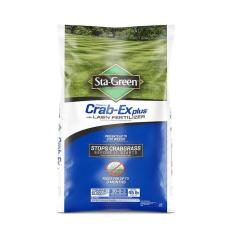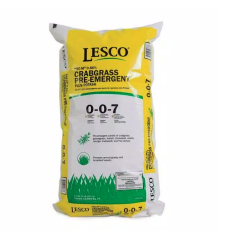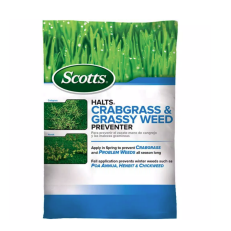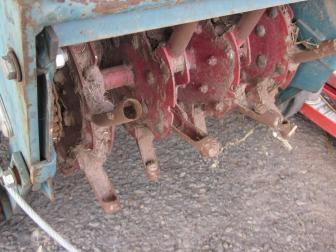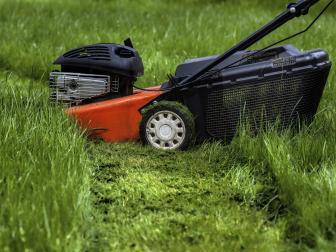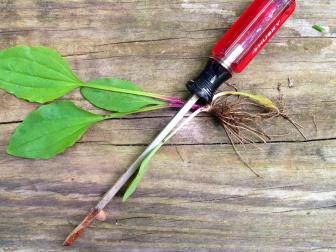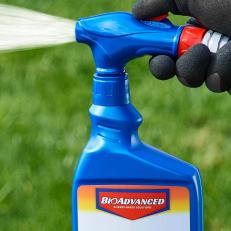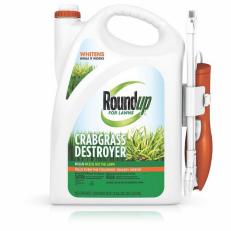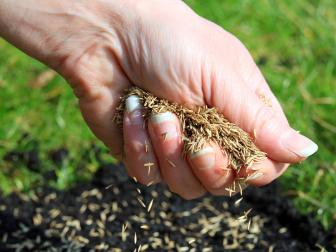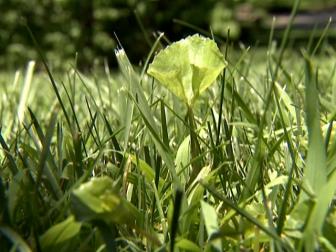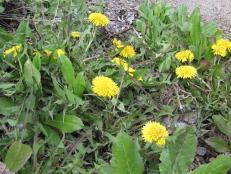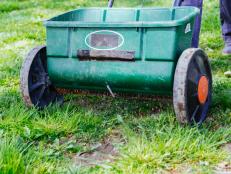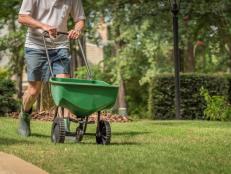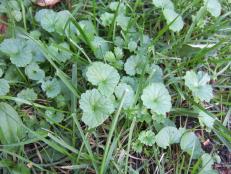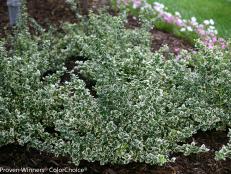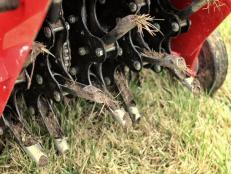How to Kill Crabgrass
Get tips for getting rid of crabgrass and preventing crabgrass from taking hold in your lawn.
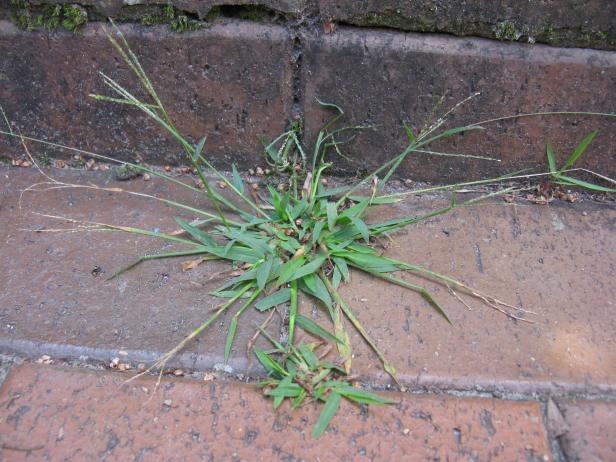
Image courtesy of Macleay Grass Man.
Is your lawn plagued by crabgrass? You’re not alone. This ugly weed is pervasive and common, and is probably taking over many yards on your block right this minute.
Crabgrass, a summer annual grassy weed, germinates in the spring from seed, lives its entire lifecycle in the summer, and then dies off. The annual cycle repeats when overwintering seeds feel spring's warm arrival.
How to Identify Crabgrass
Crabgrass is characterized by rough, pointy, light-green blades that grow in clumps that spread aggressively.
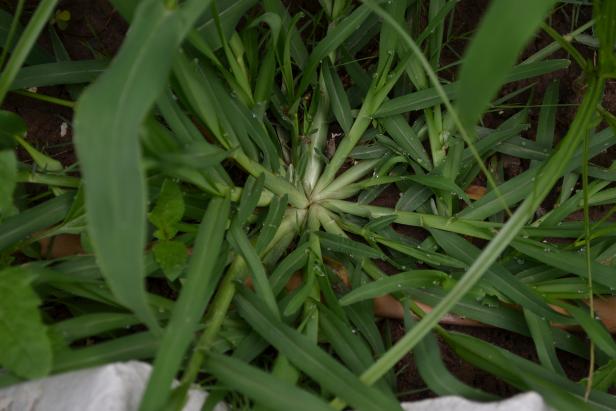
Crabgrass, in this case Digitaria ischaemum, sticks out like a sore thumb among green turf grasses.
The three common crabgrass varieties are:
- Smooth (Digitaria ischaemum)
- Southern (Digitaria ciliaris)
- Large or hairy (Digitaria sanguinalis)
All are pale green with five flat blades, and thrive in moist, fertile conditions in warm weather, especially in full sun.
Crabgrass Seeds
Overwintering as seeds, crabgrass seeds start germinating once air and soil temperatures (to a 2 to 4-inch depth) average 55 degrees, but additional seeds may germinate as late as June. Crabgrass propagates through generous seed production. A single plant will produce as many as 150,000 seeds, which spread easily by wind.
Because these invasive weeds sit very low to the ground, mower blades do not reach the plant but will agitate the seed heads, scattering seeds and accelerating propagation. Unmanaged, crabgrass can quickly overtake a lawn or appear along walkways or in pavement cracks during spring and summer months. Crabgrass will not survive the first frost, but the seeds remain to begin the cycle again when warm weather returns.
How to Prevent Crabgrass
Crabgrass Pre-Emergent
If crabgrass has been a problem in previous years, seeds lie in wait. The most popular and effective way to control crabgrass is to apply a pre-emergent herbicide. Pre-emergents prevent crabgrass seedlings from maturing, therefore solving a crabgrass problem before it begins.
Here are some tips on applying the crabgrass preventer:
- Apply a few weeks before the last frost date in your area. Dr. Clint Waltz, a professor and turfgrass specialist at the University of Georgia, says that while it certainly warms up at different times across the country, spreading pre-emergent by March 15 is a pretty good rule. There's little to no penalty for spreading the pre-emergent a little early.
- Water after application, according to the label on the pre-emergent.
- Two applications may be required to achieve good control. Apply a second application 45 to 60 days after the first application, according to the label on the pre-emergent.
Once crabgrass appears, pre-emergent herbicides may still be applied, but other strategies must also be employed to prevent the spread of seeds from developed plants.
Pre-emergent herbicides consist of pendimethalin, prodiamine or dithiopyr. Corn gluten is an organic pre-emergent option to synthetic herbicides, though Waltz says corn gluten isn't as effective.
Note: A pre-emergent herbicide will, in addition to preventing crabgrass seed from germinating, also prevent your turfgrass from germinating. It's best to wait six weeks after applying a pre-emergent before you sow grass seed.
Buy Crabgrass Pre-Emergent
Keep A Healthy Lawn
A thick, luxuriant bed of grass is the best crabgrass deterrent.
"It’s basic ecology," says Waltz. "The plant competition from the desirable grass would prevent other grasses from coming in."
Crabgrass thrives in sunlight. A lawn with bare patches or one that's cut too short will allow this low-profile weed easy growing conditions. A healthy lawn free of bare patches and cut taller will outcompete these low-profile weeds for sunlight, reducing its spread.
How to Aerate Your Lawn
Learn how to give your grass a breath of fresh air with these tips on aerating lawns.
Regular aeration and proper mowing go a long way to maintaining a healthy lawn. Check with your local extension agent for the best height to cut your type of grass. Here are suggested cut heights for some popular grasses:
- Fescue: 3 to 4 inches
- Kentucky bluegrass: 2.5 to 3.5 inches
- Zoysia: 1 to 2 inches
- Bermuda 1 to 2 inches
- Buffalo: 2.5 to 4 inches
- Centipede: 1.5 to 2 inches
Seeding or fertilization of cool weather grasses should be avoided during warm months in which crabgrass grows easily.
Learn the Right Way to Mow 13 Photos
Grow a healthy, lush lawn with these 13 essential mowing tips.
Proper watering is also key to controlling crabgrass growth. Frequent watering encourages crabgrass germination. Instead, water turf deeply and infrequently, allowing the soil to dry completely between watering.
But, what to do if crabgrass has already taken hold in your yard?
How to Get Rid of Crabgrass
Crabgrass Removal
Clumps can be pulled easily in spring when they have shallow roots. But by the time crabgrass has taken a hold on your yard come summer, you’ll need to turn to chemical methods — which are not always effective and may leave ugly patches of dead crabgrass in their wake — or just wait for the plant to die out over the winter and then try to prevent its reappearance next year.
Post-Emergent Herbicides
Post-emergent herbicides can be applied practically any time during the growing season. They work by disrupting cellular processes within the plant itself. In other words, they destroy the existing plants, not the plants yet to come. As a result, you can safely sow grass seed after you've applied a post-emergent herbicide. Waltz says some post-emergent herbicides can delay germination, so check the label on the post-emergent for help with timing your planting schedule.
Make sure to choose a post-emergent herbicide labeled for the turf you have and your area. Post-emergent herbicides work better when applied to small plants. It might take more than one application to control larger plants.
Post-emergent herbicides include fenoxaprop and quinclorac.
Shop Crabgrass Post-Emergent
More Healthy Lawn Tips
How to Repair Bald Spots in Your Lawn
Learn how to fix bald spots in your lawn by repairing with seed or patching with sod.
How to Reclaim a Weedy Yard
Grow healthy grass and say 'goodbye' to nasty weeds with these simple tips.






